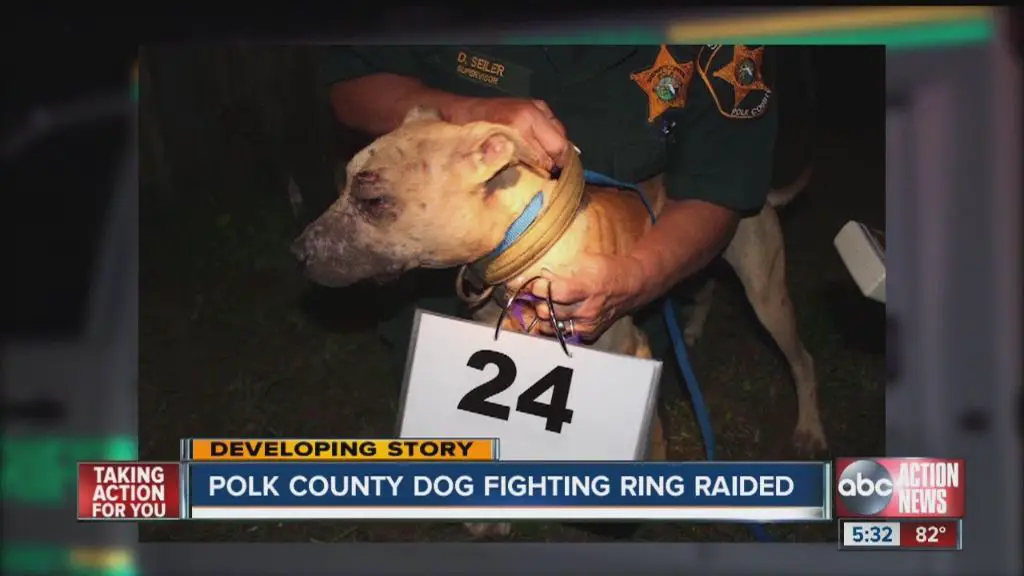Introduction
Dog fighting is an old blood sport where two dogs are pitted against each other in a ring or a pit to fight, usually until one dog is deceased or unable to continue fighting. These fights are sometimes staged as entertainment by spectators who wager on the outcome. Dog fighting is considered a felony in all 50 states and banned across the United States. This brutal practice often involves abusive training methods and severe cruelty to the dogs involved, leaving many dogs injured or killed.
This article provides a comprehensive overview of how dog fighting is a federal crime, including the specific laws prohibiting it, the penalties involved, investigation and rescue efforts, the effects it has on communities, and ongoing work to prevent it. The goal is to educate readers on dog fighting from legal and ethical standpoints.
Federal Laws Against Dog Fighting
There are several key federal laws that make dog fighting a crime across the United States:
The Animal Welfare Act – Passed in 1966, this law prohibits animal fighting and spells out that promoting, training, transporting, or selling fighting dogs is illegal. The act was amended in 2007 to increase penalties for violating the law.
Animal Fighting Venture Prohibition – Part of the federal farm bill passed in 2002, this provision bans knowingly sponsoring or exhibiting an animal in a fighting venture. It also prohibits knowingly selling, buying, transporting, delivering, or receiving animals for fighting purposes.
Preventing Animal Cruelty and Torture Act (PACT) – Signed into law in 2010, this act criminalizes certain extreme acts of animal cruelty. These include creating, selling, distributing, or intentionally viewing “animal crushing” videos where animals are purposely crushed, burned, drowned, suffocated, impaled, or subjected to other forms of torture.
Violating any of these federal laws can lead to fines, imprisonment, forfeiture of assets, and loss of custody of the animals. The penalties vary based on the specific offenses and conditions.
State Laws

All 50 states have laws that make dog fighting illegal. These laws prohibit various aspects of dog fighting ranging from training dogs to fight to operating dog fighting events and attending fights as a spectator. Most of these laws make it a felony offense to engage in dog fighting though the specific penalties vary widely from state to state. While a handful of states still classify dog fighting as a misdemeanor, the vast majority treat it as a serious felony-level crime. Some states even have laws allowing police officers to seize property, vehicles and cash associated with dog fighting operations. Though state laws vary, they all unequivocally ban the promotion, attendance and operation of dog fights.
Penalties for Dog Fighting
Dog fighting is a felony crime in all 50 states. Both federal and state laws impose strict penalties for engaging in any aspect of dog fighting.
Under the federal Animal Welfare Act, participation in dog fighting is punishable by up to 5 years in prison, a fine of up to $250,000, or both. Penalties increase for repeat offenders or professionals involved in dog fighting activities, such as breeding, training or selling fighting dogs. Federal laws also make it a felony to possess, train, sell, buy, transport or deliver dogs intended for fighting, or to sponsor or exhibit dog fights.
States also have a wide range of felony penalties for dog fighting activities. For example, being a spectator at a dog fight can result in up to 10 years in prison in some states. Possessing fighting dogs, fighting paraphernalia or training equipment, or promoting or staging a dog fight can lead to multi-year prison sentences as well.
The consequences of being involved in dog fighting extend beyond criminal penalties. A felony conviction results in the loss of certain rights and privileges, including the right to vote, own a firearm, and receive government benefits.
Investigating Dog Fighting
Investigating dog fighting rings and collecting evidence is a difficult and dangerous task for law enforcement officials. Many dog fighting operations are elaborate criminal networks that require undercover work and wiretaps to infiltrate them. Officers will go undercover to attend dog fights, gather visual evidence with hidden cameras and get information from informants. They look for people with multiple pit bulls, heavy chains and treadmills that could be used for training fighting dogs. Certain veterinary supplies like antibiotics, IV kits and vitamin supplements may also indicate dog fighting.
Police monitor websites, social media groups and online marketplaces associated with dog fighting to find events and track activity. Officers will also follow up on tips from the public of suspected dog fighting. Once sufficient probable cause is established, search warrants can be obtained to enter properties and seize dogs and evidence like training equipment, records of fights and evidence of gambling. Forensic evidence is collected from the dogs themselves, including DNA, injuries, scars and medical examinations. The ASPCA has forensic vets who work with law enforcement to examine rescued dogs.
Building strong court cases requires documentation like veterinary records, incriminating photos/videos and evidence of gambling profits. It often takes many months to fully infiltrate and shut down large dog fighting rings. The investigations are complicated, time-consuming and require multi-agency cooperation between local police, state officials, FBI and animal welfare groups.
Rescuing Fighting Dogs

Dogs used in dog fighting rings often require intensive behavioral and medical rehabilitation before they can be adopted into homes. Many of these dogs have lived their entire lives chained or confined without positive human interaction or socialization with other dogs. As a result, they may be undersocialized, fearful, or reactive towards people or other animals.
Rescue organizations that take in fighting dogs have special programs focused on behavioral modification and counterconditioning. This involves slowly and positively exposing the dogs to new situations in order to decrease fear and anxiety responses. The dogs are taught how to walk on leashes, interact with people, and get along with other dogs. Anti-anxiety medication may be used in some cases to assist with rehabilitation.
Veterinary care is a huge component as well. Fighting dogs often have significant injuries such as broken bones, damaged teeth, skin infections, and open wounds that require treatment. They may also be malnourished and benefit from specialized diets and nutritional supplements.
With time, patience, and the right approach, many dogs rescued from fighting operations can recover both physically and emotionally and go on to live happy lives as pets. There are numerous success stories of former fighting dogs who have been rehabilitated and placed in loving adoptive homes, despite their abusive pasts. Their capacity for resilience, trust, and affection after rehabilitation can be incredibly moving.
Effect on Communities
Dog fighting operations often contribute to increased crime and violence in communities where it occurs. Drug sales, illegal gambling and shootings frequently happen in conjunction with dog fights as large amounts of cash flow through these criminal operations. Law enforcement has noted that gang activity spikes in areas where dog fighting is prevalent.
The presence of dog fights attracts other criminal elements into neighborhoods, putting law-abiding community members at risk. Children can be exposed to the graphic violence of animal blood sport, potentially normalizing cruelty in developing minds. Stolen pets used as bait dogs may disappear from families’ homes and end up seriously injured or dead in a dog fighting ring.
The dangerous criminal activity associated with dog fighting destabilizes communities and deteriorates the quality of life for residents. Community members may live in fear of violence breaking out or losing their pets to theft. Resources must be directed to stopping dog fighting operations and prosecutors pursue felony convictions for those involved.

Animal Cruelty Connection
There is a clear link between dog fighting and other forms of animal abuse and violence. People involved in dog fighting often engage in other criminal activities and have a history of violence against animals. Dog fighting operations are often associated with other forms of cruelty such as hoarding, puppy mills, neglect and abandonment.
Dog fighting perpetrators frequently commit violent acts against bait animals including stolen pets, rabbits, cats and other small animals used to “blood” fighting dogs. They have no regard for animal welfare or ethics. Additionally, the act of training dogs to attack goes hand in hand with instilling violent, aggressive behavior that can then be directed at humans.
Stopping dog fighting helps prevent other cruel acts against animals. Law enforcement and animal control need to monitor known offenders and rescue organizations should provide care for all abuse victims. Tougher laws, investigations and public awareness can eventually eradicate this form of animal abuse.
Prevention Efforts
Education and outreach are critical for preventing dog fighting. Many animal welfare organizations work to educate children and teens, particularly those in at-risk communities, about the cruelty involved in dog fighting. They aim to steer youth towards more positive activities and teach them compassion for animals. Some programs bring shelter dogs into schools and youth facilities to interact with kids, allowing them to bond with dogs as living, feeling beings that deserve care and affection.
Public awareness campaigns can also help prevent dog fighting by informing people about warning signs, legal repercussions, and where to report suspected dog fighting. Billboards, social media posts, and other outreach help raise community consciousness and engagement on this issue. Strong prevention requires getting proactive involvement from citizens, community leaders, law enforcement, and animal care professionals across regions plagued by dog fighting.

Conclusion
In summary, dog fighting is illegal under federal law and strictly prohibited in all 50 states under animal cruelty laws. There are severe punishments for violations, including steep fines and years in jail. Law enforcement agencies aggressively investigate reports, rescue abused dogs, and work to prevent this criminal activity through community outreach and enforcement.
The federal Animal Welfare Act classifies dog fighting as a felony, punishable by up to 3 years in prison and a $250,000 fine. The federal Animal Fighting Prohibition Enforcement Act strengthened penalties, with those convicted facing up to 5 years in prison and a $250,000 fine. States impose additional penalties such as property forfeiture and bans on owning animals.
Investigators and animal control officers rescue abused fighting dogs and provide veterinary care and rehabilitation. Non-profit groups also assist in re-homing animals seized in fighting operations. Community members are encouraged to report any suspected dog fighting and help raise awareness of this cruel bloodsport’s impacts.
Dog fighting inflicts tremendous animal suffering and also harms communities through gang activity, gambling, drugs, and violence. Continuing advocacy, education, enforcement, and rehabilitation efforts are key to abolishing this inhumane practice.